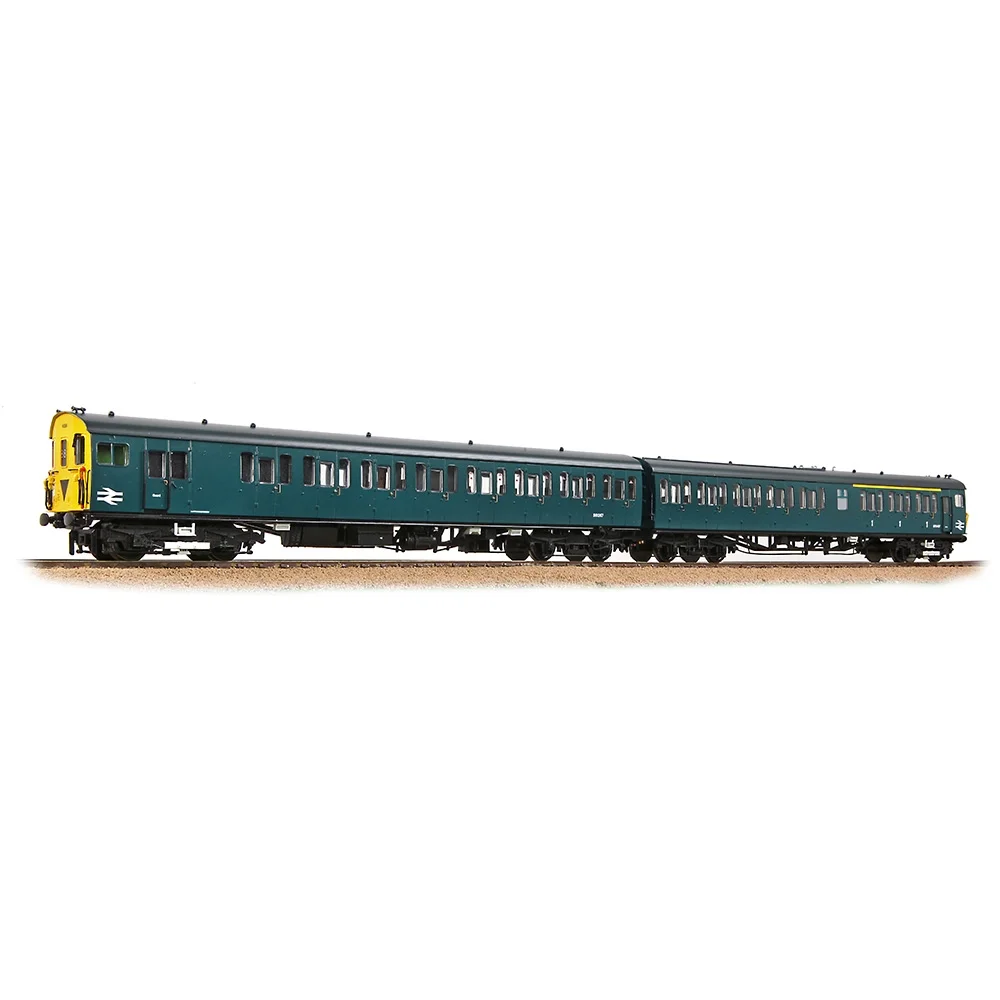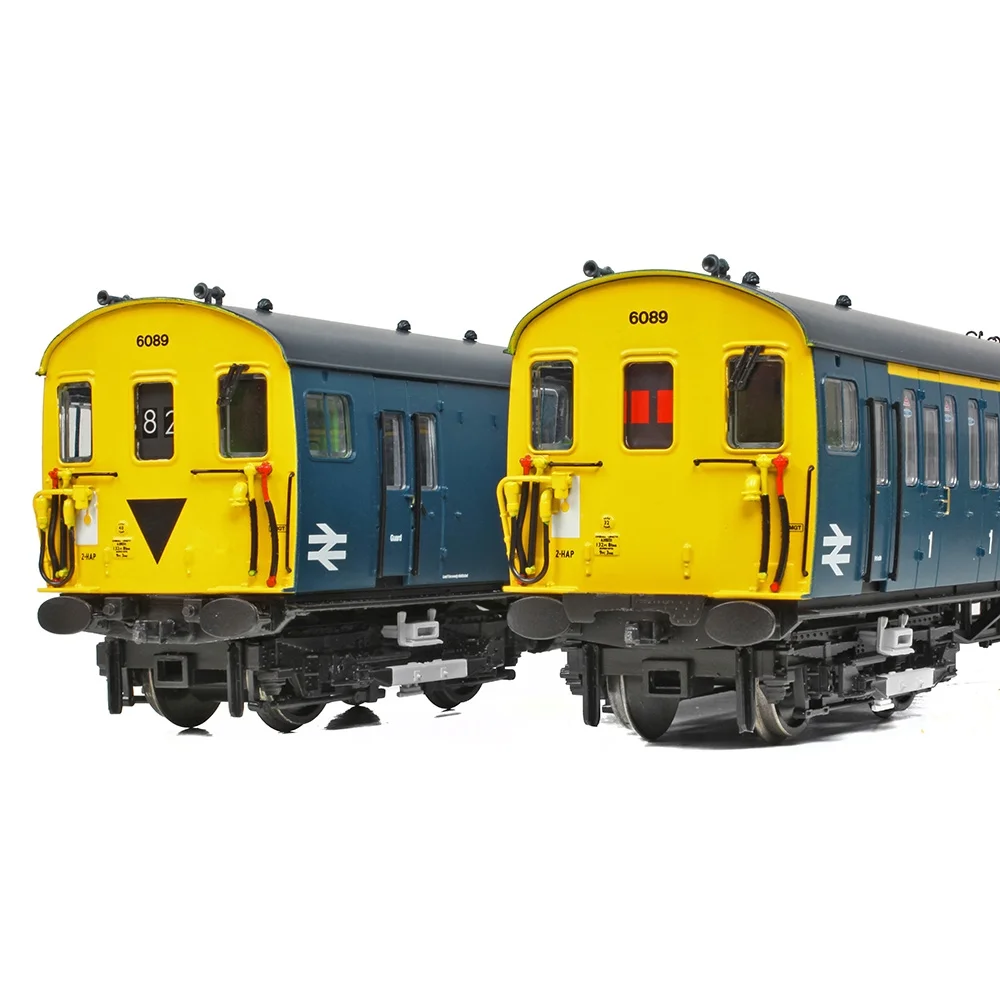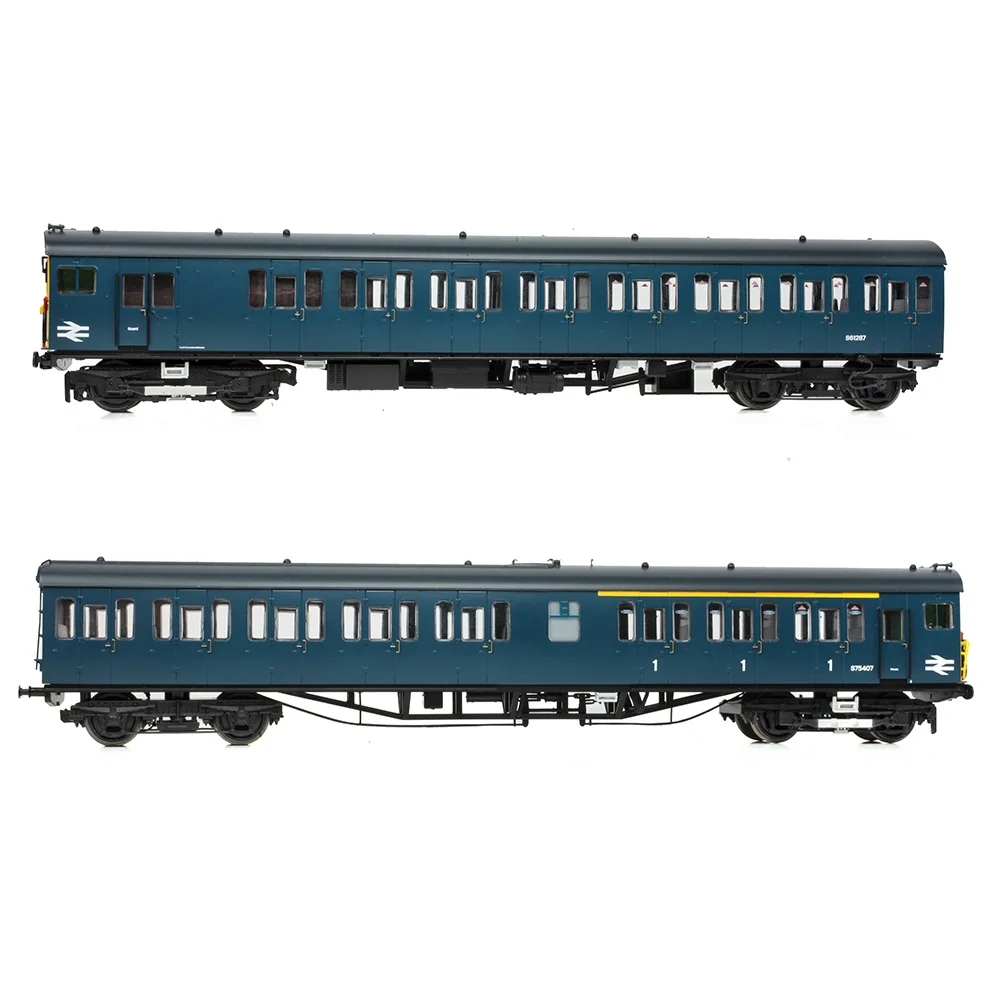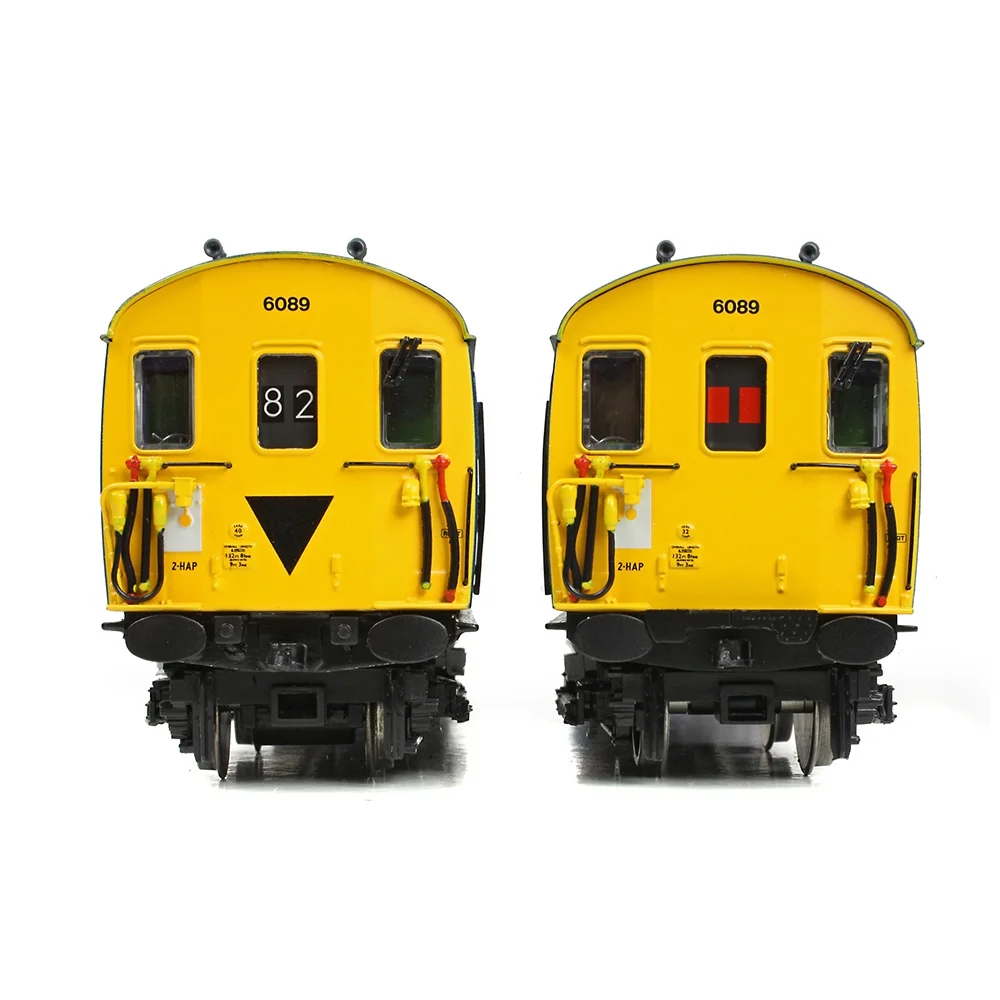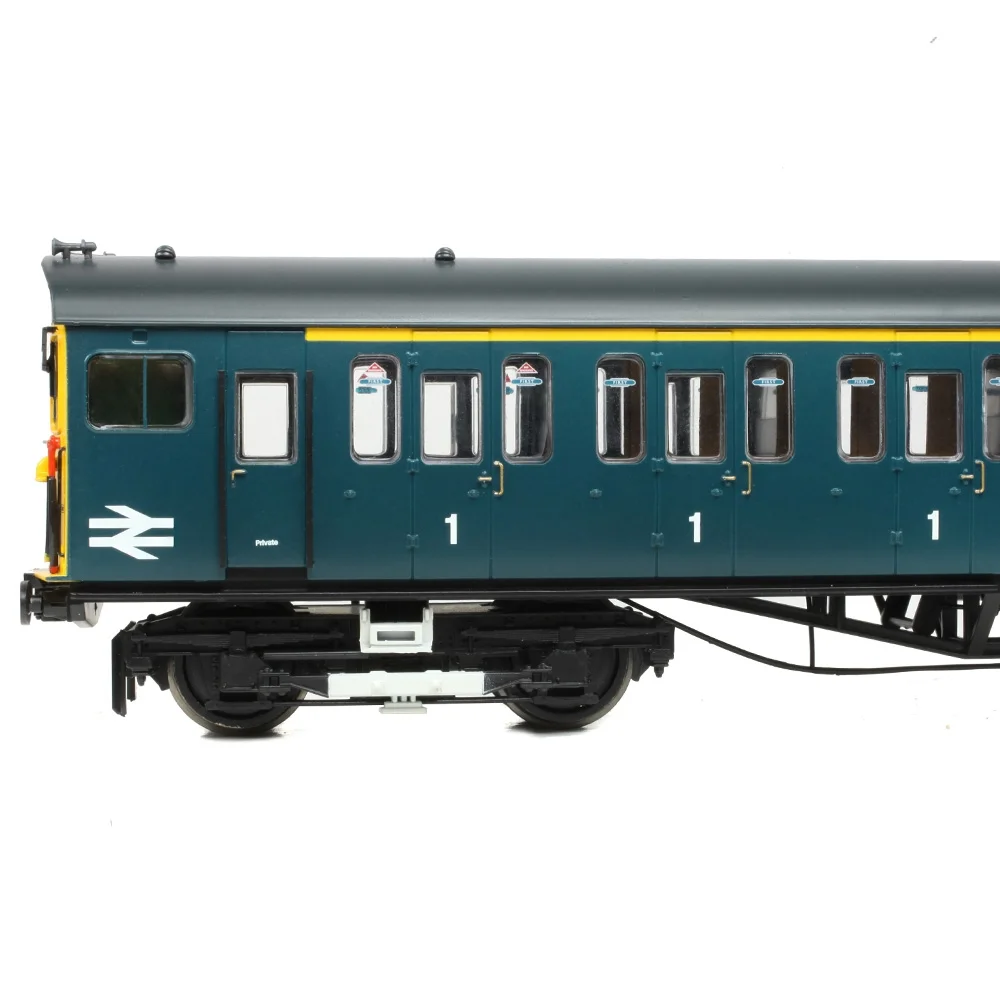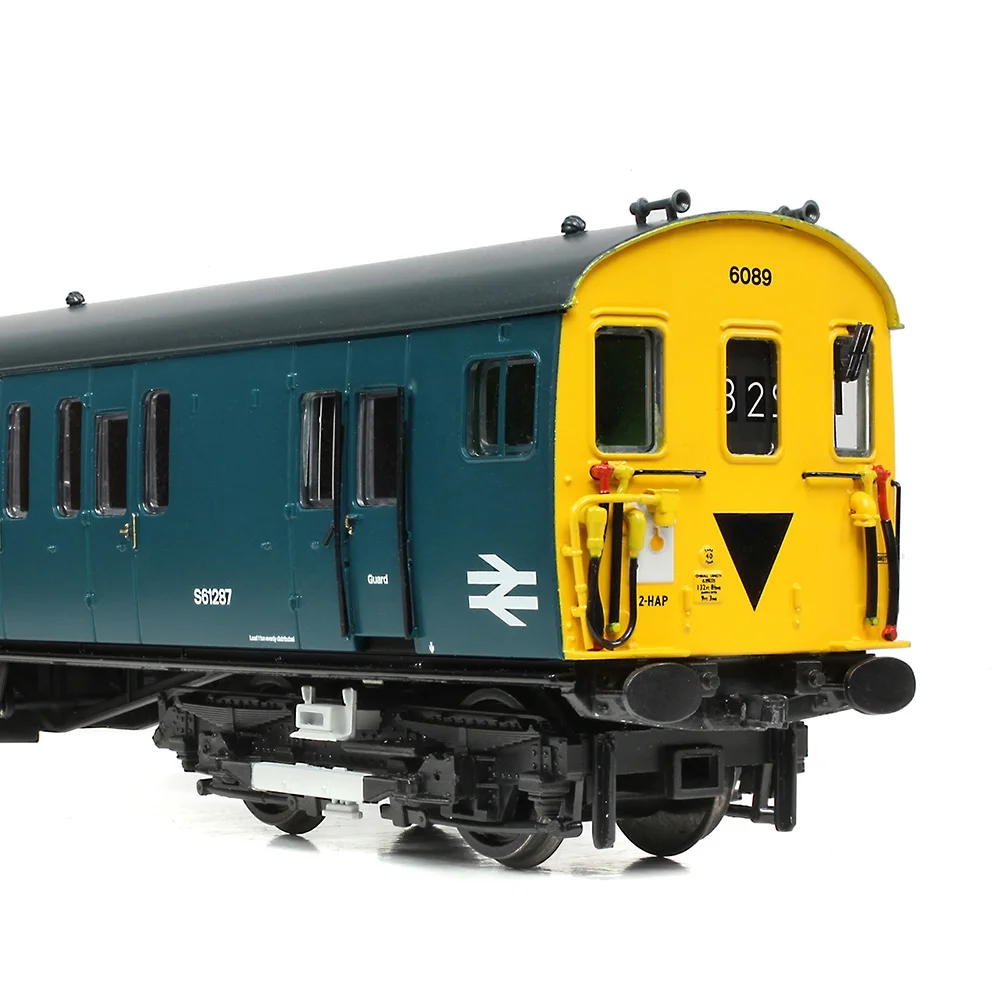Bachmann 31-394
British Rail Class 414 6089 British Rail Blue
Bachmann's Description & Specifications
Bachmann Branchline pioneered the production of Southern Third Rail Electric Multiple Units (EMUs) with the introduction of the 4CEP, the first contemporary OO Scale model of its type and since that seminal release, further first generation EMUs have joined the Branchline range. The 2-HAP (later Class 414) is the most recent introduction.
Like the real units, this 2-HAP comprises a Driving Motor Brake Second (DMBS) and a Driving Trailer Composite Lavatory (DTCL) and both vehicles are constructed from precision moulded bodyshells that are adorned with fine detail from the door handles, hinges and bumpers, to the steps at the inner ends. Metal wire handrails and filler pipes are also fitted to the inner ends, whilst the driving cabs are adorned with multiple working equipment, windscreen wipers and whistles above the driver’s window, all fitted separately. Guard’s periscopes feature on the roof of the DMBS too. Underneath each vehicle the truss frames and brake gear is depicted, along with a full set of auxiliary equipment and boxes. The flush glazed windows give a view of the internal seating which is made all the more visible thanks to the interior lighting, whilst the cab is fitted with a driver’s seat, control desk and brake wheel.
With conductive couplings employed between the two vehicles, mounted on close-coupling mechanisms, NEM coupling pockets are also fitted to the bogies at each end allowing multiple units to be coupled together. Each wheelset is fitted with electrical pickups and capacitors are used to provide back-up power preventing light flicker. Just a single 21 Pin decoder is required to use the model on DCC, or why not opt for a SOUND FITTED model which comes pre-fitted with a ESU Sound Decoder to provide authentic sound effects on DCC or Analogue Control straight out of the box.
We are delighted to present this stunning two car set in BR Blue livery for the first time.
- Bachmann Branchline OO Scale
- Era 7
- Unit is now Preserved
- Pristine BR Blue Livery
- Set No. 6089
- 2-Car Unit comprising DMBS No. S61287 and DTCL No. S75407
- NEM Coupling Pockets at the outer ends
- Integral conductive couplings mounted on close-coupling mechanisms between vehicles
- Accessory Pack - including Short & Long conductive couplings
- Powerful 5-pole motor driving the motor bogie fitted to the DMBS - just like the real units
- Interior Lighting including the Driving Cab
- Illuminated Headcode Blinds
- Ready to accept a Speaker
- Equipped with a 21 Pin DCC Decoder Socket - recommended Decoder 36-557A
- Length 532mm
Class & Prototype
- Class: British Rail Class 414
- Traction: Electric Multiple Unit
- Built: 1956-1963
- Total Built: 209
The BR Class 414, known as the "2HAP" (2-car Half lavatory electro-Pneumatic), were pioneering electric multiple units that served Southern Region from 1956-1995. Built at Eastleigh Works in four batches totalling 209 units, these elegant two-car EMUs featured Britain's first production electro-pneumatic braking system, enabling 90mph express operation and sophisticated multiple working capabilities.
Distinguished by their Mark 1 coach profiles and characteristic "slam-door" design, the Class 414 units provided dual-class accommodation with 19 first-class compartment seats and 134 second-class saloon seats, plus lavatory facilities. Powered by twin EE507 traction motors producing 1,250hp, they formed the backbone of Kent Coast electrification services, working everything from London-Dover expresses to rural branch shuttles.
The class adapted throughout its 39-year career, serving through BR green, blue/grey, and Network SouthEast liveries whilst maintaining exceptional reliability. Technical innovations including electro-pneumatic braking and advanced control systems influenced British EMU design for decades. Today, unit 4308 survives in preservation at the Science Museum, whilst excellent Bachmann OO gauge models in multiple liveries enable authentic recreation of Southern electric operations for railway modellers and enthusiasts.
No prototype found.
Operator & Livery
- Operator: British Rail
- Livery: Blue
British Rail (1965-1997) transformed Britain's railways through revolutionary modernisation, introducing the iconic double arrow logo, Rail Blue livery, and business sectorisation. BR pioneered high-speed rail with the InterCity 125 and Advanced Passenger Train, electrified major routes, and created profitable divisions like InterCity and Network SouthEast. From steam succession through diesel and electric development to privatisation preparation, British Rail's diverse locomotive fleet, multiple livery schemes, and operational scenarios provide unparalleled variety for railway modellers across all scales and periods.
BR Blue, also known as Rail Blue or Monastral Blue, was introduced in 1965 as part of British Rail's comprehensive corporate identity overhaul that accompanied the rebranding from British Railways to British Rail. The colour was officially defined by British Standards BR28/6001 (airless spray finish) and BR28/5321 (brush finish), representing a dark, greyish blue tone specifically chosen to hide dirt and weathering effects well.
The livery was prototyped on the experimental XP64 train in 1964 before becoming the standard scheme from 1 January 1965. Rail Blue was applied to all diesel and electric locomotives with yellow warning panels (initially small, then extending to full yellow ends from 1966). The standardised application included the iconic double arrow logo and Rail Alphabet typeface, creating one of the most successful transport corporate identities of the 20th century.
The livery dominated British Rail operations for over two decades until sectorisation in the 1980s began fragmenting the unified appearance. Despite initial colour fading problems in early applications, these were resolved by the late 1970s when the Large Logo variant was introduced featuring extended yellow areas and full-height double arrow symbols. Rail Blue's enduring appeal among railway enthusiasts reflects its role as the definitive British Rail image during the organisation's most unified period.
